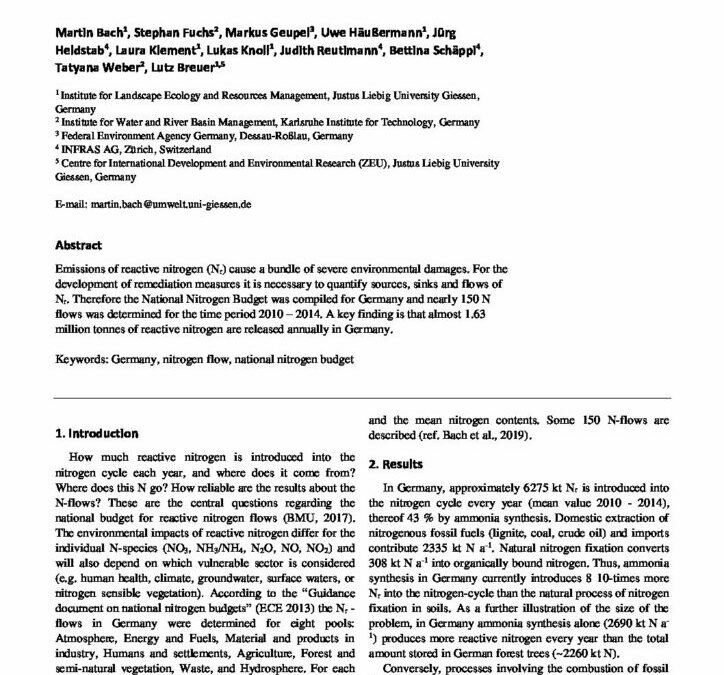National nitrogen flows in Germany

Emissions of reactive nitrogen (Nr) cause a bundle of severe environmental damages. For the development of remediation measures it is necessary to quantify sources, sinks and flows of Nr. Therefore the National Nitrogen Budget was compiled for Germany and nearly 150 N flows was determined for the time period 2010 – 2014. A key finding is that almost 1.63 million tonnes of reactive nitrogen are released annually in Germany.
How much reactive nitrogen is introduced into the nitrogen cycle each year, and where does it come from? Where does this N go? How reliable are the results about the N-flows? These are the central questions regarding the national budget for reactive nitrogen flows (BMU, 2017). The environmental impacts of reactive nitrogen differ for the individual N-species (NO3, NH3/NH4, N2O, NO, NO2) and will also depend on which vulnerable sector is considered (e.g. human health, climate, groundwater, surface waters, or nitrogen sensible vegetation). According to the “Guidance document on national nitrogen budgets” (ECE 2013) the Nr – flows in Germany were determined for eight pools: Atmosphere, Energy and Fuels, Material and products in industry, Humans and settlements, Agriculture, Forest and semi-natural vegetation, Waste, and Hydrosphere. For each pool the trans-boundary N-flows (imports and exports) are also calculated. The N-flows are taken directly from statistical reports, publications, etc., or are calculated as the product of the quantity of transported or converted substance and the mean nitrogen contents. Some 150 N-flows are described (ref. Bach et al., 2019).
